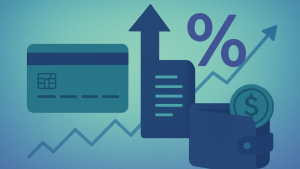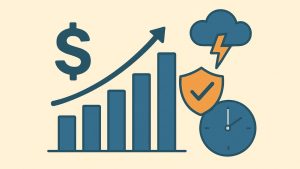Navigating the world of credit card debt can be complex, especially when interest rates rise unexpectedly. It’s a situation many Americans face, leading to increased financial stress. Understanding your options and strategies for dealing with rising rates is crucial to maintain financial health. Preparing yourself with the right knowledge and tools can make a significant difference in managing your liabilities effectively.
The impact of soaring interest rates is felt most acutely in your monthly statements. Suddenly, minimum payments don’t seem as effective in chipping away at that balance. Adjusting your financial tactics to counter these increases is essential, allowing you to maintain control over your financial situation and reduce stress.
Understanding the impact of rising interest rates

Interest rate fluctuations can severely affect how quickly you clear your credit card balances and personal loans. When rates go up, so do your costs, which can be challenging if left unaddressed. Understanding this relationship helps you grasp why timely actions are vital to prevent interest from climbing past manageable levels.
Higher interest translates to larger minimum payments, stretching your budget thinner. It’s like running on a treadmill—paying more yet feeling like you’re not getting anywhere. Recognizing the signs of increasing rates and responding with effective strategies can safeguard your financial stability.
Analyzing your current debt situation
Before addressing a rate increase, assess your current debts. Calculate your total credit card balance and the interest rates applied to each account. Understanding which cards have the highest rates is the first step in crafting an actionable plan. With these insights, prioritize paying off cards with higher interest first, known as the avalanche method, to minimize costs.
Consider options such as transferring balances to cards with lower introductory rates or negotiating with lenders for lower rates. These proactive measures can alleviate the pressure from rising interest costs and give you a clearer path to debt reduction.
Strategies to manage increased interest rates
Once you’ve assessed your situation, it’s time to implement strategies that can help reduce the overall cost of your credit card debt and personal loans. Be proactive in adjusting your payment plan to accommodate for increased rates, ensuring more of your payment goes toward the principal balance.
Explore consolidating debts through personal loans that offer lower fixed rates than your current cards. Additionally, increasing your monthly payments—even slightly—can significantly reduce the effects of rising interest over time, saving you money and lowering stress levels.
Adopting practical financial habits
Adopting better financial habits is crucial for long-term stability. Set a budget that accounts for higher interest payments, cutting unnecessary expenses to compensate for extra costs. Use budgeting tools or apps to track spending and pinpoint areas where you can save more.
Automate payments to avoid late fees and consider setting up reminders for any recurring payments. Remember, small adjustments can lead to substantial savings when managing your debts efficiently under new financial circumstances.
Preparing for future rate changes
Preparation is key to dealing with future financial uncertainties. Establish an emergency fund to cover unexpected expenses, providing a buffer that keeps you from accruing more debt. Regularly review your financial plan and adjust it as necessary to reflect any changes in income or expenses.
Stay informed about economic trends and potential rate changes, giving you the foresight to adjust your strategy as needed. By keeping a close eye on financial news and continuously planning, you can manage credit card debt more effectively, even when interest rates rise.






